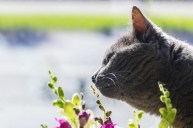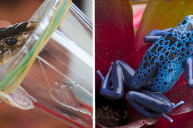Okay, rule number 1 of survival is I don't recommend putting strange plants near your junk if you don't know what they are. One man had the misfortune of using the world's most poisonous plant as toilet paper. The resulting pain was so much that he ended up shooting himself.
Let me introduce you to the Gympie-Gympie. The poisonous plant has tiny needles, almost like hair, that's full of poison waiting for you or some other misfortunate soul to touch it. The resulting pain has reportedly driven people to consider taking their own lives. It doesn't help that Gympie-Gympie plants can grow up to 32 feet tall.
So what does it feel like? Well if you touch this very poisonous plant then you can expect a burning sensation that feels like you're being electrocuted. The pain isn't a quick one either. It can last for weeks or potentially months. As with all thing poisonous, it originates from Australia.
Highly Poisonous Plant
Although the exact details are unknown, a man once reportedly used the plant as a toilet paper. It's a rash decision that led to him to shoot himself over the pain.
"The plant usually flowers and produces its fruits when it is less than three meters tall, and it could reach up to 10m in height," John Knox, an expert, explained. "The stem, branches, petioles, leaves, and fruits are all covered in the stinging hairs and not to be touched."
He also said, "The tiny brittle hairs, known as trichomes, are loaded with toxins over the entire plant and if touched, stay in the skin for up to a year. And release the toxin cocktail into the body during triggering events such as touching the affected area, contact with water, or temperature changes."
However, that hasn't stopped some people from trying grow the plant themselves. In 2022, Daniel Emlyn-Jones grew the poisonous plant at his home. But he was fortunate and smart enough to put up a warning sign for any people visiting.
He told The Mirror, "I don't want to come over as a loon. I'm doing it very safely. Some botanic gardens have these plants as interesting specimens."




